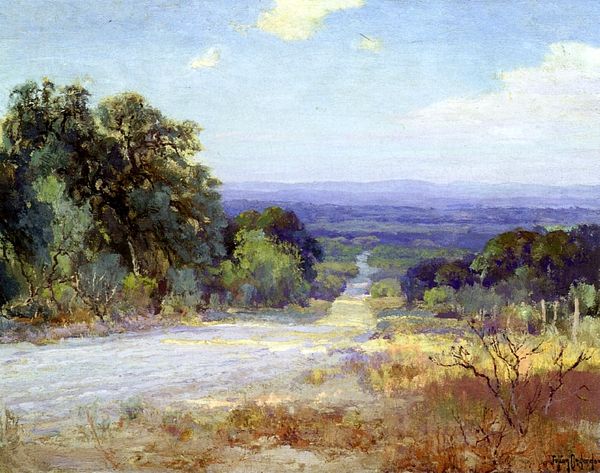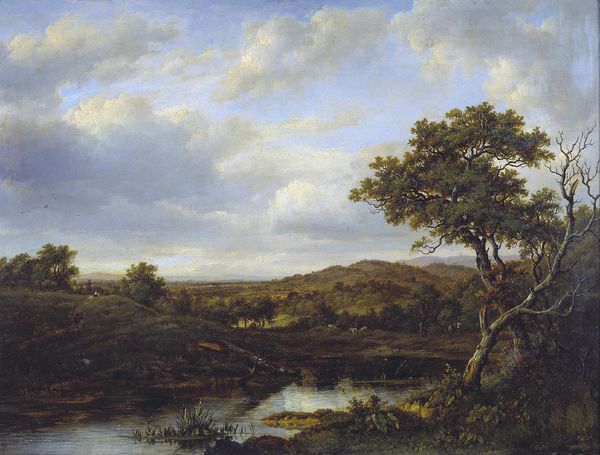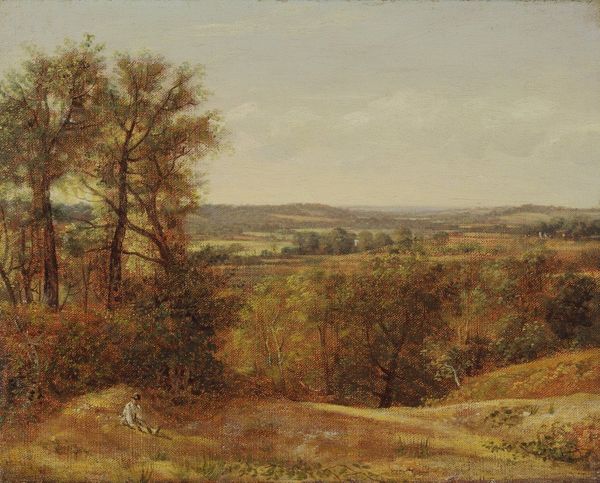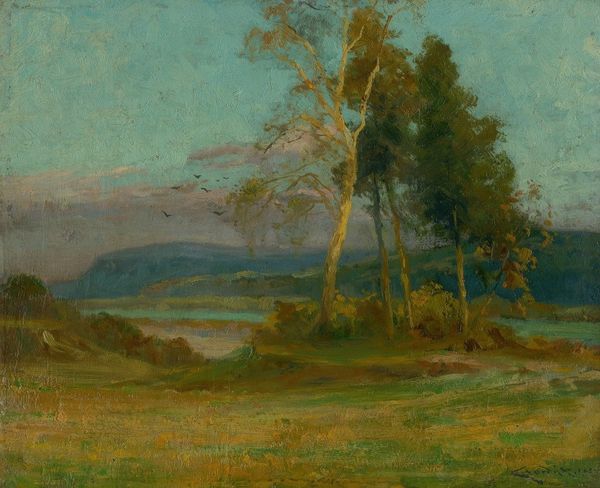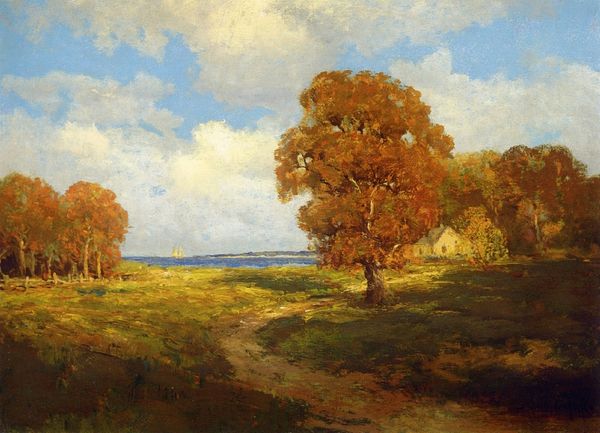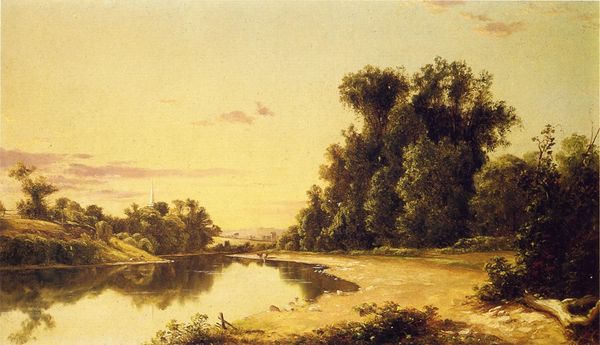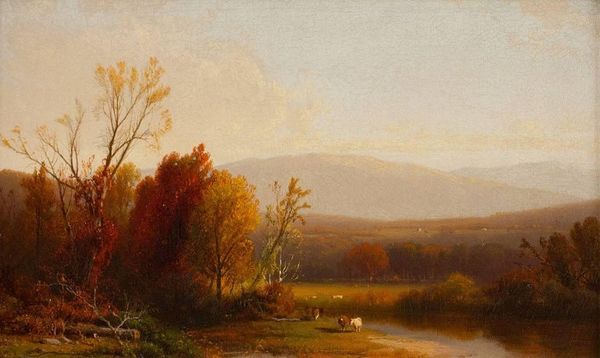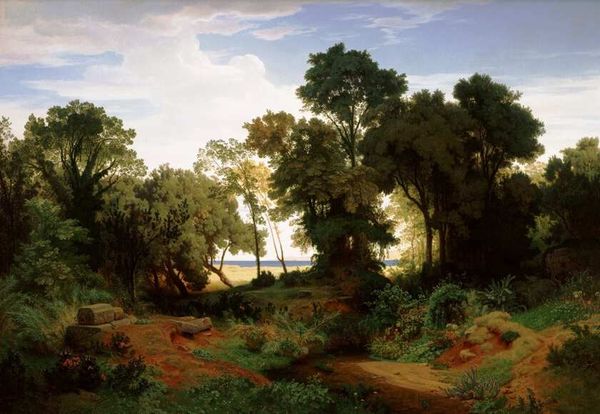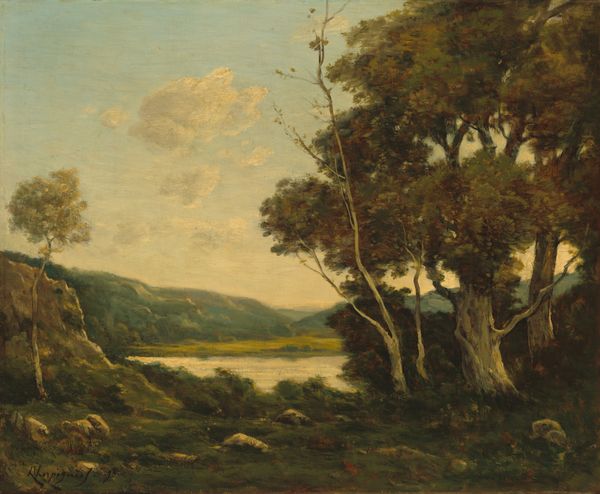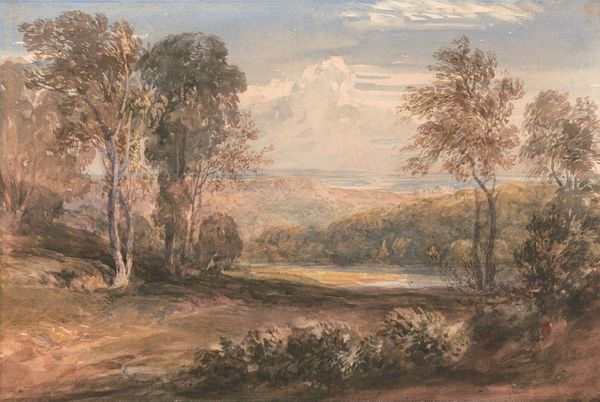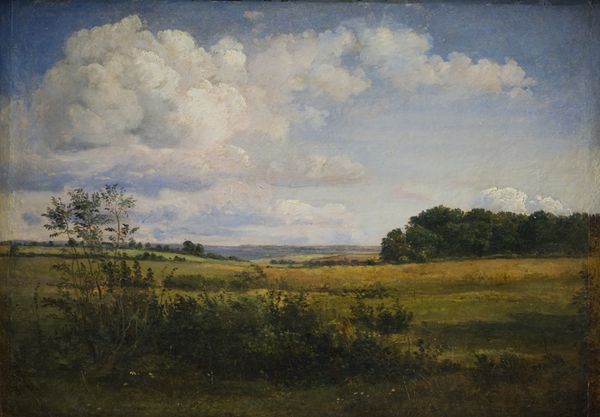
Copyright: Public domain
Editor: This is William Hart’s “Hudson River Landscape,” painted in 1854 using oil on canvas. It's a classic vista, very serene and picturesque, but also feels a little…composed, you know? What do you see in this piece? Curator: Beyond the immediate visual appeal, I see a reflection of the socio-political landscape of the time. The Hudson River School, of which Hart was a part, often depicted an idealized American landscape. But who was this ideal for, and at whose expense was it created? Editor: So you’re saying this idealized landscape might be masking something? Curator: Precisely. Consider the concept of Manifest Destiny. These paintings promoted the idea of westward expansion, often overlooking the violent displacement of Indigenous peoples and the environmental impact of such expansion. The subtle romanticism distracts us from critically addressing questions of race, ownership, and environmental responsibility. Editor: I hadn’t thought about it that way. So the very act of painting this serene scene has political implications? Curator: Absolutely. Art doesn't exist in a vacuum. This painting is a statement, albeit a subtle one, about power and privilege. Notice how the landscape invites settlement, erasing any evidence of prior inhabitants and promoting an idea of endless opportunity only accessible to some, primarily white settlers. What does that evoke in you? Editor: It definitely gives me a lot to think about, how even beautiful art can carry complex, sometimes troubling messages. I will certainly be looking at landscape art differently going forward. Curator: Exactly! And remember, art is not just about what is seen but about critically examining how it came to be.
Comments
No comments
Be the first to comment and join the conversation on the ultimate creative platform.

